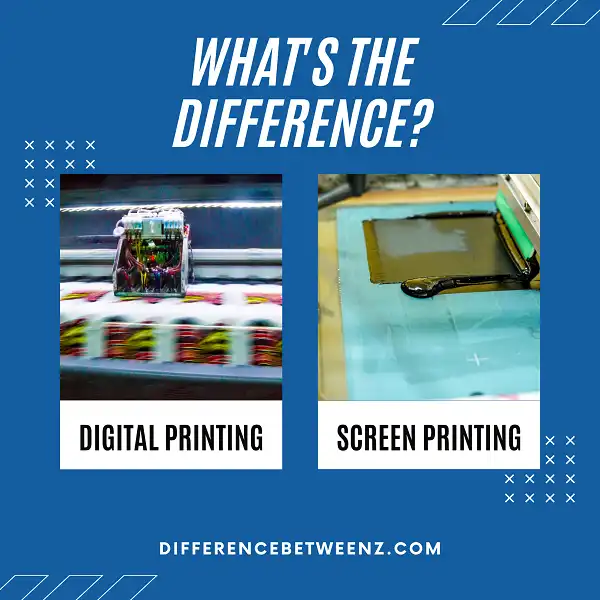Screen printing and digital printing are the two most common methods of printing textiles. They both have their own unique benefits, which is why many businesses use a combination of the two techniques. In this blog post, we’ll take a look at the difference between digital and screen printing so you can decide which is best for your needs.
What is Digital Printing?
Digital Printing is a method of printing from a digital file directly onto a variety of media. Unlike traditional printing methods, which use a printing plate to transfer an image onto paper, digital printing bypasses the need for a printing plate altogether.
- This makes digital printing much faster and more versatile than traditional methods, as well as more cost-effective for short print, runs. Digital Printing also offers a wide range of possibilities in terms of customization and personalization.
- Images can be printed directly onto a variety of materials, including paper, cardstock, fabric, and even metal or glass. Digital Printing is perfect for businesses or individuals who need high-quality prints in small quantities.
- With digital printing, there are no minimum order quantities, and you only pay for the prints that you need.
What is Screen Printing?
Screen printing is a printing technique where a mesh is used to transfer ink onto a surface, whether it be t-shirts, posters, or other materials. A blade or squeegee is moved across the screen to fill the open mesh apertures with ink, and a reverse stroke then causes the screen to touch the substrate momentarily along a line of contact.
- This causes the ink to wet the substrate and be pulled out of the mesh apertures as the screen springs back after the blade has passed. One color is printed at a time, so several screens can be used to produce a multicolored image or design. Screen printing is also known as silkscreen, serigraphy, and serigraph printing.
- Screen printing is a versatile printing technique that can be used on many different materials, including paper, cloth, glass, metal, and plastic. It is also possible to print on three-dimensional surfaces such as wood or ceramic tiles.
- Screen printing offers many advantages over other printing techniques, including its ability to produce vibrant colors, high durability, and low cost. Screen printing is an ideal choice for promotional items such as t-shirts and posters, as well as for artistic applications such as fine art prints and limited edition prints.
Difference between Digital and Screen Printing
Digital printing and screen printing are two popular methods for printing images onto fabric. Both methods have their own advantages and disadvantages, so it’s important to choose the right one for your project.
- Screen printing is a more traditional printing method that involves creating a stencil of the image to be printed and then using that stencil to apply ink to the fabric.
- This method is typically best for large quantities of prints, as it can be quite time-consuming to set up the stencils.
- Digital printing, on the other hand, uses digital technology to transfer the image directly onto the fabric.
- This method is generally faster and easier, making it ideal for smaller print runs. However, it is also more expensive.
So, which printing method should you choose? Ultimately, it depends on your needs and budget. If you need a large number of prints, screen printing may be the better option. If you need a smaller number of prints or want a higher-quality image, digital printing may be the way to go.
Conclusion
There are many differences between digital and screen printing, but the most important difference is that digital prints can be reproduced an infinite number of times, while screen prints are limited to the number of screens available. This also means that digital prints tend to be less expensive, although there are other considerations to take into account when deciding which type of printing to use for your project.


